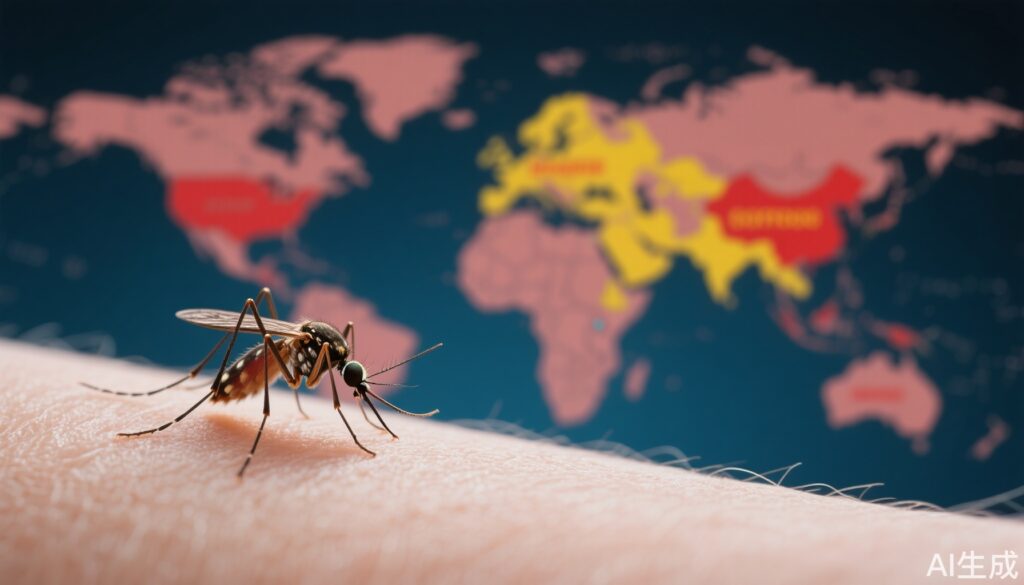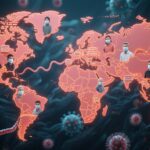The Return of Chikungunya
In the early 2000s, most Americans had barely heard of chikungunya—a mosquito-borne virus notorious for causing high fevers and debilitating joint pain. But in recent years, headlines have warned of its unexpected return, with fresh outbreaks reported across Africa, Asia, Europe, and the Americas. The World Health Organization (WHO) and Centers for Disease Control and Prevention (CDC) have issued alerts as cases surge, including in places where the virus was previously rare or absent. What is driving this global resurgence, and how worried should we be?
Background: What is Chikungunya?
First identified in Tanzania in 1952, chikungunya (from the Makonde word for “that which bends up,” referring to the stooped posture of sufferers) is caused by the chikungunya virus (CHIKV), transmitted primarily by Aedes aegypti and Aedes albopictus mosquitoes. The disease’s hallmark is severe joint pain—sometimes lasting months—alongside fever, rash, and headache. While often non-fatal, chikungunya can be profoundly disabling, especially for older adults and those with chronic conditions.
Global Epidemiology: A Virus on the Move
After decades of relative obscurity, chikungunya exploded onto the global scene in the mid-2000s with major outbreaks in the Indian Ocean islands, India, and Southeast Asia. In 2013, the virus reached the Americas, causing widespread epidemics in the Caribbean, Central and South America, and even the United States. According to the WHO, over 3 million cases have been reported worldwide since 2017, with significant outbreaks in Brazil, India, Bangladesh, and Thailand as of 2023–2024. Climate change, urbanization, and the spread of Aedes mosquitoes are key factors behind this resurgence.
Case Vignette: Sarah’s Story
Sarah, a healthy 34-year-old from Florida, returned from a family vacation in the Caribbean feeling feverish, with excruciating joint pain and a blotchy rash. Initially misdiagnosed as a mild flu, her symptoms persisted for weeks, making even simple tasks—like opening a jar—agonizing. Her eventual diagnosis: chikungunya. Months later, Sarah still struggles with lingering joint stiffness—a reminder of the virus’s potential for long-term impact.
Scientific and Clinical Evidence: What the Data Tell Us
Chikungunya’s clinical course is typically acute and self-limiting, but in up to 40% of patients, joint pain can persist for months or even years (Simon et al., 2022). Severe disease is more common in older adults, newborns, and people with underlying health conditions (PAHO, 2023). Recent studies suggest that emerging variants of the virus may lead to more severe symptoms and longer-lasting complications (Yactayo et al., 2016).
Table: Typical Clinical Features of Chikungunya Infection
| Symptom | Frequency (%) |
| Fever | 90–100 |
| Joint pain | 87–98 |
| Headache | 40–60 |
| Rash | 40–50 |
| Muscle pain | 50–60 |
| Fatigue | 60–80 |
There are currently no specific antiviral treatments for chikungunya. Management is supportive, focusing on rest, hydration, and pain relief (often with acetaminophen or NSAIDs, but not aspirin due to bleeding risk).
Misconceptions and Harmful Behaviors
Despite increased awareness, misconceptions persist:
– “Chikungunya is always mild.” In reality, the disease can cause chronic pain and rare but severe complications (e.g., heart, liver, or eye involvement).
– “Only travelers are at risk.” Recent outbreaks in the U.S. and Europe show local transmission is possible wherever Aedes mosquitoes are present.
– “Mosquito bites at night are most risky.” Aedes mosquitoes are aggressive day biters, so protection is needed during daylight hours.
– “Home remedies can cure chikungunya.” There is no cure; unproven remedies can delay appropriate care.
Prevention: What Actually Works?
With no licensed vaccine (though several are in advanced clinical trials: Chang et al., 2023), the cornerstone of prevention remains avoiding mosquito bites and controlling mosquito breeding. Practical recommendations include:
– Use EPA-registered insect repellents (DEET, picaridin, IR3535, oil of lemon eucalyptus).
– Wear long sleeves and pants, especially during the day.
– Use window screens and bed nets where mosquitoes are prevalent.
– Eliminate standing water near homes (flowerpots, tires, gutters), which serve as breeding grounds.
– Community-based vector control programs (e.g., larvicide spraying, public education) are essential in outbreak settings.
Expert Insights and Commentary
“The resurgence of chikungunya is part of a broader trend of vector-borne diseases expanding into new regions due to climate change and global travel,” says Dr. Emily Carter, an infectious disease specialist at Johns Hopkins University. “We need robust surveillance, rapid diagnostics, and community engagement to prevent large-scale epidemics.”
Dr. Carlos Mendes, an epidemiologist with the Pan American Health Organization (PAHO), adds: “Vaccines are on the horizon, but public health measures remain our best defense for now. Everyone—travelers and residents alike—should stay informed and take mosquito precautions seriously.”
Looking Ahead: Research and Hope
Several chikungunya vaccines are in advanced Phase III trials, including VLA1553 (Valneva) and CHIKV VLP (Emergent BioSolutions), showing promise for future prevention (Chang et al., 2023). Rapid diagnostic tests and new vector control technologies (including genetically modified mosquitoes) are also being deployed in hard-hit regions.
Conclusion: A Re-Emerging Threat
Chikungunya’s resurgence is a reminder that infectious diseases can cross borders and adapt to new environments. While the risk to most Americans remains low, the potential for local outbreaks is real—especially in warmer states. Vigilance, public health preparedness, and personal protection are our best tools until effective vaccines become widely available.
References
– Chang LJ, et al. Safety and immunogenicity of a live-attenuated chikungunya vaccine: a phase 3, randomized controlled trial. Lancet. 2023;401(10372):50-61.
– Simon F, Javelle E, Oliver M, et al. Chikungunya virus infection. Curr Infect Dis Rep. 2022;24(4):43-52.
– Yactayo S, Staples JE, Millot V, et al. Epidemiology of chikungunya in the Americas. J Infect Dis. 2016;214(suppl 5):S441–S445.
– Pan American Health Organization (PAHO). Chikungunya – Epidemiological Update, 2023. https://www.paho.org/en/documents/chikungunya-epidemiological-update-2023
– Centers for Disease Control and Prevention (CDC). Chikungunya Virus. https://www.cdc.gov/chikungunya/index.html



